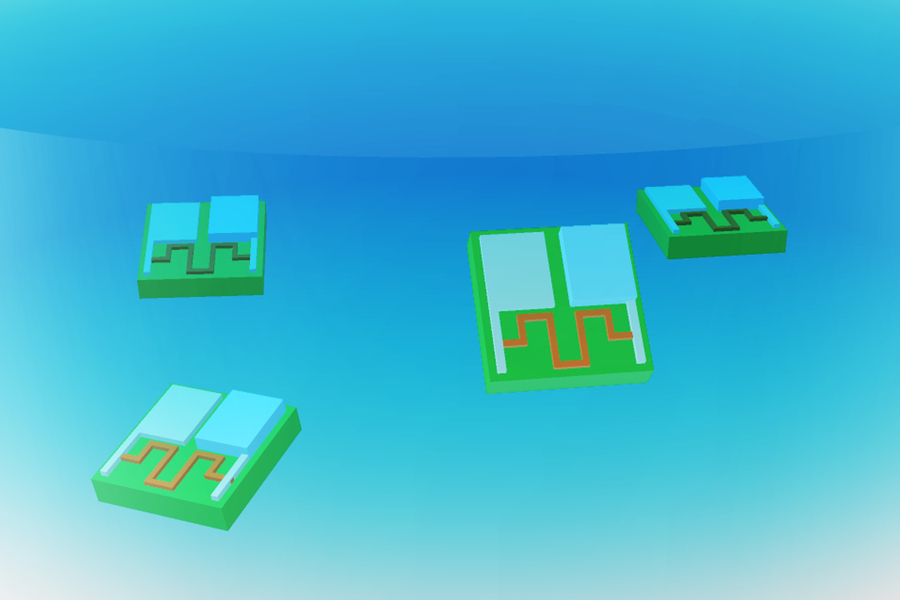2024-08-15 マサチューセッツ工科大学(MIT)
 The zinc-air battery is 0.1 millimeters long and 0.002 millimeters thick.
The zinc-air battery is 0.1 millimeters long and 0.002 millimeters thick.
Credit: Courtesy of the researchers
<関連情報>
- https://news.mit.edu/2024/mit-engineers-design-tiny-batteries-powering-cell-sized-robots-0815
- https://www.science.org/doi/10.1126/scirobotics.ade4642
コロイド・ロボットのための高エネルギー密度ピコリットル・スケール空気亜鉛マイクロ電池 High energy density picoliter-scale zinc-air microbatteries for colloidal robotics
Ge Zhang, Sungyun Yang, Jing Fan Yang, David Gonzalez-Medrano, […], and Michael S. Strano
Science Robotics Published:14 Aug 2024
DOI:https://doi.org/10.1126/scirobotics.ade4642
Editor’s summary
Energy storage at the micrometer scale is an ever-growing challenge as robots are progressively downsized. Moreover, the use of wet chemistry in battery technologies limits their potential to be scaled down beyond millimeters in size. Zhang et al. have now developed a high energy density zinc-air battery at the picoliter scale in volume. Using photolithography, 10,000 batteries could be fabricated from a single 50.8-mm wafer and released into solution. Moreover, the batteries could achieve an energy density above 760 watt-hours per liter and were capable of powering micrometer-sized devices such as colloidal robots, sensors, and memristor circuits. —Amos Matsiko
Abstract
The recent interest in microscopic autonomous systems, including microrobots, colloidal state machines, and smart dust, has created a need for microscale energy storage and harvesting. However, macroscopic materials for energy storage have noted incompatibilities with microfabrication techniques, creating substantial challenges to realizing microscale energy systems. Here, we photolithographically patterned a microscale zinc/platinum/SU-8 system to generate the highest energy density microbattery at the picoliter (10−12 liter) scale. The device scavenges ambient or solution-dissolved oxygen for a zinc oxidation reaction, achieving an energy density ranging from 760 to 1070 watt-hours per liter at scales below 100 micrometers lateral and 2 micrometers thickness in size. The parallel nature of photolithography processes allows 10,000 devices per wafer to be released into solution as colloids with energy stored on board. Within a volume of only 2 picoliters each, these primary microbatteries can deliver open circuit voltages of 1.05 ± 0.12 volts, with total energies ranging from 5.5 ± 0.3 to 7.7 ± 1.0 microjoules and a maximum power near 2.7 nanowatts. We demonstrated that such systems can reliably power a micrometer-sized memristor circuit, providing access to nonvolatile memory. We also cycled power to drive the reversible bending of microscale bimorph actuators at 0.05 hertz for mechanical functions of colloidal robots. Additional capabilities, such as powering two distinct nanosensor types and a clock circuit, were also demonstrated. The high energy density, low volume, and simple configuration promise the mass fabrication and adoption of such picoliter zinc-air batteries for micrometer-scale, colloidal robotics with autonomous functions.



